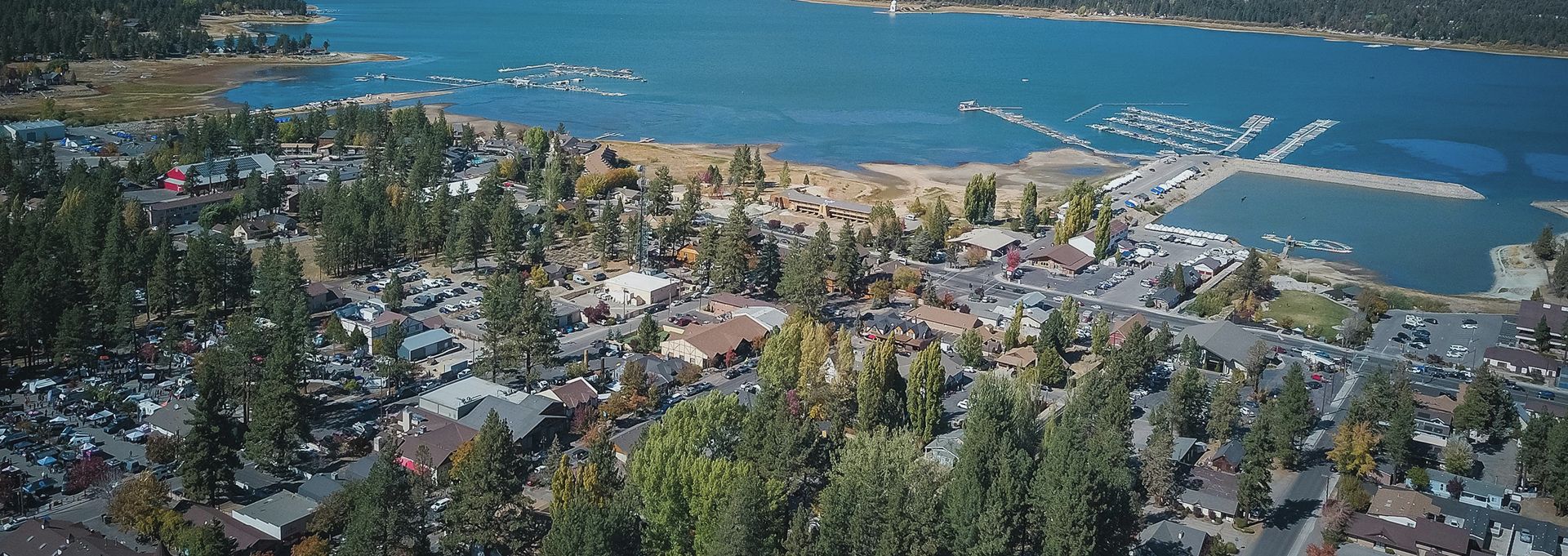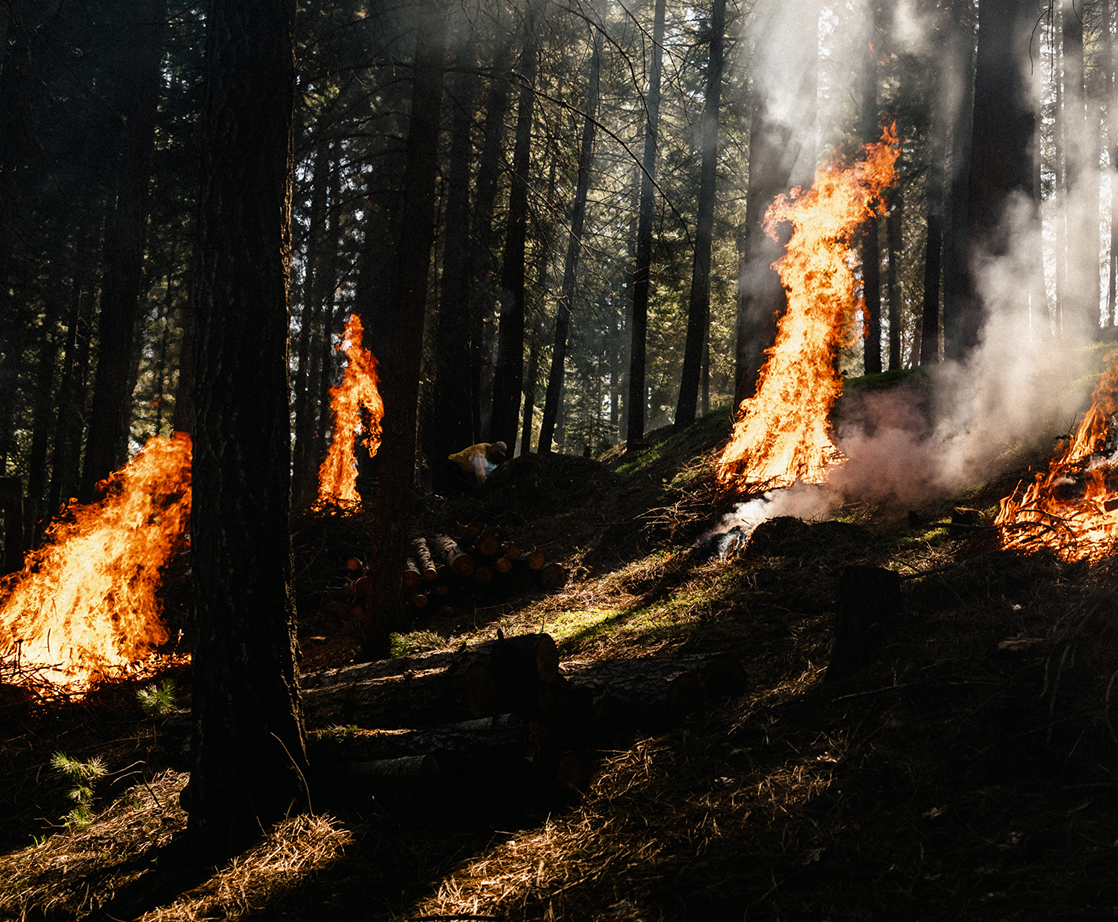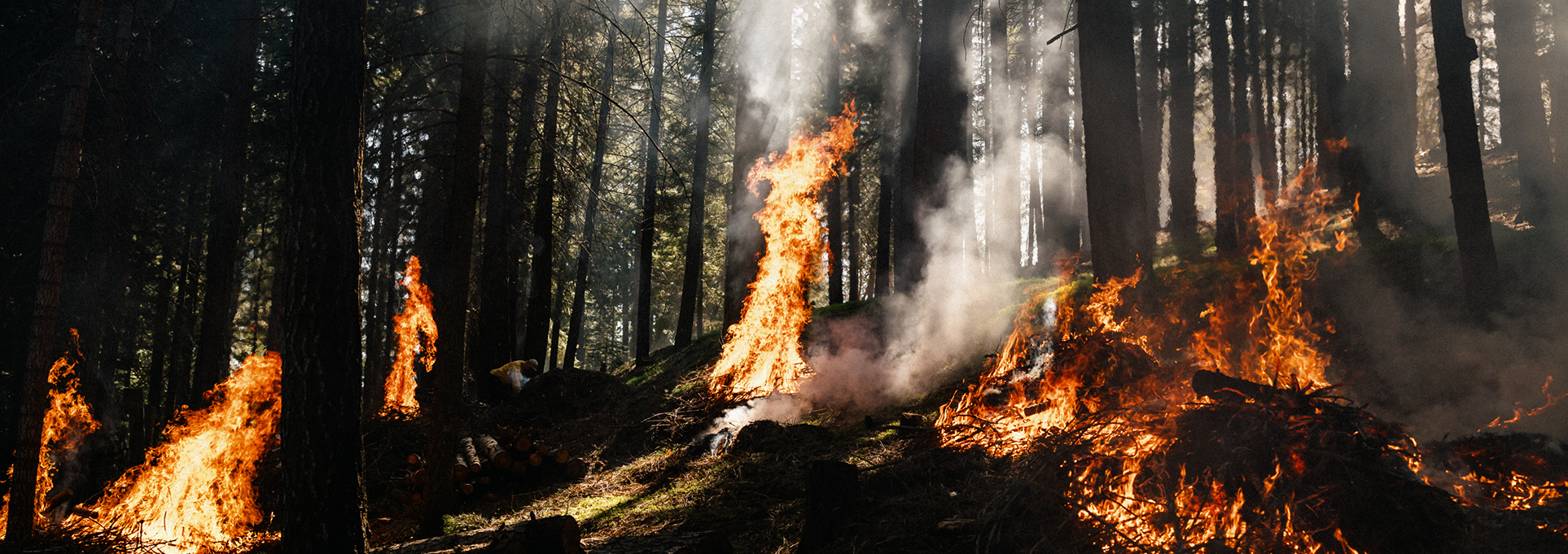Following the hottest year ever recorded, our encounters with smoke and wildfires have become distressingly personal in the past year. Tragically, these experiences have affected communities that historically have rarely found themselves at the forefront of such disasters. Join me as we delve into how we arrived at this critical point and uncover actionable solutions to curb further environmental damage — a discussion I recently presented at TEDxBoston.
The Age of Megafire – What is it?
In recent years, we’ve seen an increase in “megafire”, the kind of fire that grows to 100,000 acres or more and destroys communities and ecosystems. Often these fires start in or spread to unresilient surrounding wildlands, ravaging landscapes so severely that we see, sometimes permanent, changes: shrublands converting to grasslands; forests converting to shrublands or grasslands with massive ecological and economic losses to the “services” we depend on ecosystems to provide.
But fire isn’t always synonymous with destruction; it's a crucial element for ecosystems that make up half of Earth’s landmass. The regeneration of fire-adapted or reliant species, like buckbrush, manzanita, native grasses, aspen, and many species of coniferous trees is reliant on fire. The issue we face today is an overabundance of the wrong kind of fire, catastrophic fires like the Dixie Fire in Northern California — resulting in extensive and often permanent loss of forests that play a pivotal role in our planet’s health. Why? About 70% of accessible freshwater originates from forests, 80% of terrestrial biodiversity resides within forests and forests annually absorb approximately a third of human carbon emissions. In short — we need our forests to be healthy. If our forested ecosystems fail, which will happen in the next 2-3 decades unless we rapidly accelerate interventions, we face catastrophic failure of our health and our economy. We forget that the global economy is 100% rooted in nature.
So, how did we get here?
4 Big Mistakes
The era of megafire is the result of human actions.
For more than 20,000 years, indigenous communities practiced cultural burns, acknowledging fire's power for land management. Robin Wall Kimmerer, a Potawatomi professor and scientist, stresses in her book “Braiding Sweetgrass: Indigenous Wisdom, Scientific Knowledge, and the Teachings of Plants” the connection between nature and fire: “The land gives us so many gifts, and fire is a way we can give back.” Kimmerer likens the use of fire on the land to an artist’s brush — an art, science, and responsibility to the Potawatomi people.
Our first mistake was removing indigenous peoples from the lands they were managing and protecting. We decimated tribes and outlawed the use of cultural fire in the 1800s. The loss of this tending and application of beneficial fire allowed fuel to accumulate and set the stage for destructive megafires, beginning the demise of ecosystem health.

Next, we played out the Lorax. The mining and railroad industry’s unchecked actions to power our early economy in the 1800-early 1900s led to the decimation of 93% of Western forests — leaving only 7% old growth remaining. This removal of mature, fire-resistant trees and the homogenization of landscapes as forests grew back all at once created conditions ripe for uncontrollable wildfires.

After WWII we declared war on fire, creating the 10AM policy which stated that every fire had to be out by 10AM the next day. We used literal war planes to drop water and later fire retardant on fires the moment they started. Between the lack of cultural fire and fire suppression of 100% of fires started by lightning or man made sources, with increasing numbers of people building homes in the wildlands, we continued to innovate better, faster fire suppression. This has resulted in hazardously overgrown, sickly forests and other ecosystems.

Finally, we warmed Earth’s climate, drying out overgrown vegetation, increasing diseases like the Western bark beetle killing billions of trees, and creating more severe winds.
This “perfect storm” is resulting in rapid intensification of fire severity and frequency of these intense natural disasters. And, unfortunately, what we’ve experienced to date is just the tip of the iceberg.
We Can Fix This.
The answer lies in restoring our stewardship relationship with nature. We can mitigate risk, in part, by restoring landscape resilience, remembering our deep connection to the ecosystems around us. We have to own the fact that we have chosen to live in ecosystems that depend on fire for survival. That means we must too — we’re part of our ecosystems, right? We can make homes and communities more resilient and, through ecological land management and increasing beneficial fire, we can restore ecosystem health, dramatically reducing fire severity and probability.
A recent study, co-authored by Michael Wara from Stanford Woods Institute for the Environment, finds that low-intensity fires in California’s mixed conifer forests lower the risk of catastrophic fires by 60%, lasting for at least six years. The key lies in bolstering resilience in surrounding wildlands to contain fires at ground level.
The issue is urgent, but resources are scarce, so prioritization is crucial. Where we intervene in what order matters — that’s where we come in.
Vibrant Planet employs machine learning to map forests at high resolution, offering land managers a powerful tool to assess risks to communities and vital ecosystem services such as carbon storage, water resources, biodiversity, and recreation. Land managers can scenario plan, in real-time and collaboratively, with outputs that devise optimal treatment plans based on the resources available, with forecasted long-term effects of mitigation and restoration strategies.
Forging a Path to Resilience
The Age of Megafire is a reminder of our mistakes, but there is still an opportunity for change — it’s not too late, but we need to move fast and we need to mobilize thousands of young people into the sciences, forestry, and nature tech. Vibrant Planet’s mission is to accelerate the restoration economy. We partner with amazing science organizations, land management agencies, fire districts, utilities, states, and counties to build wildfire and ecosystem resilience.












